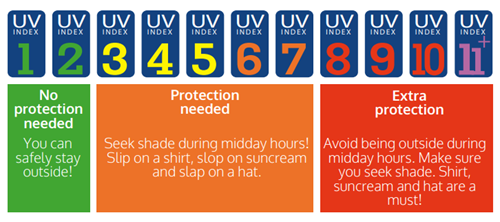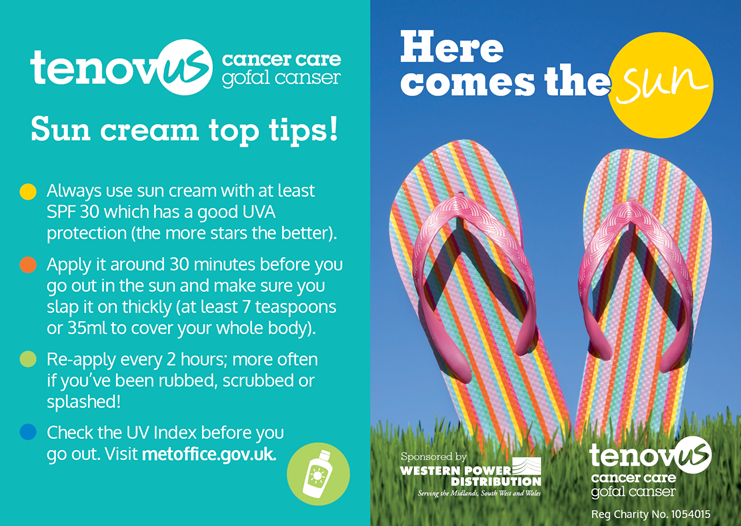So, you know your stuff about staying safe in the sun. You’ve got your sun cream, you stick it on 30 minutes before going out, and top-up regularly. You’re sorted? Well, maybe not. Research has recently shown that 80% of us are still getting it wrong!
Here’s some trivia, tips and tricks so you’re always safe in the sun.
When should I use sun cream?
Check out the Global Solar UV Index. This is a measure of the UV radiation level at the Earth’s surface and indicates the potential for skin damage. The greater the UV index value the greater the harm to skin. You need to protect your skin when the UV index is 3 or more. If you visit the Met Office’s website, they have a UV forecast on their homepage that you can customise to your location.

What does SPF mean?
Sun Protection Factor (SPF) tells us the amount of protection sun creams offer against UVB radiation. It gives an idea of how much longer skin that’s covered with the sun cream takes to redden in response to UV, compared with unprotected skin.
What are UVA and UVB?
Both are types of ultraviolet radiation from the sun. UVB is the main cause of sunburn. UVA affects the elastin in the skin leading to wrinkles, leathery skin and brown pigmentation, and skin cancer.
The UVA seal (a logo with ‘UVA’ inside a circle) shows protection against UVA and meets the EU recommendation for sun creams to offer a UVA protection factor equivalent to at least a third of their SPF.
How much sun cream should I apply?
The World Health Organization (WHO) recommends 35ml for the total body – seven teaspoons (or a shot glass full): one for the face/head and neck, one for each arm and leg, and one each for your front and back.
Is brand name sun cream better than the cheap stuff?
Research from Which? (the consumer body) suggests that even the cheapest sunscreens can provide good protection. These include own-brand sunscreens from Asda, Lidl and Wilko, which all offered the SPF claimed when tested.
Are all SPF30 sun creams the same?
Surprisingly they aren’t. Which? tested widely available regular sunscreens, using strict British Standard tests, to see if they offered the SPF they claimed. You can see which ones failed their tests and received safety alerts here.
What about ‘Once a day’ sun creams?
Which? ran a study where volunteers wore a t-shirt and sat on a chair wearing ‘once a day’ sun cream. After six to eight hours (depending on how long the product claimed to last), the sun cream’s SPF was retested. On average there was a 74% decrease in SPF protection at the end of the tests.
Once-a-day claims aren’t permitted in Australia. Anything leading people to believe sun creams don’t need to be regularly reapplied is forbidden.
Just follow our sun cream top tips!

